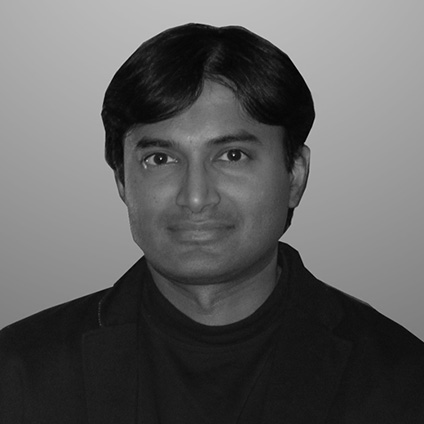Shanmuga (Shan) Jayakumar

Title: Adjunct Assistant Professor
Department: Graduate Program in Urban and Regional Design
Campus: New York City
Area(s) of Expertise: Urban history, design
Education Credentials: M.Phil.
Joined New York Tech: 2014
Shan Jayakumar is a designer and urban historian. He received his bachelor's degree from Columbia University and a graduate degree from the University of Cambridge, where his thesis investigated urban development in India. His design work has included residential, institutional, commercial, healthcare, and urban planning projects in New York and abroad. Jayakumar's current research involves finding community-based solutions to environmental and infrastructure challenges. A recent neighborhood-scale project to remedy safety issues under an elevated expressway in Brooklyn was implemented by the New York City Department of Transportation. His design on the theme of conceptual urbanism was featured in “The Greatest Grid” exhibit at the Museum of the City of New York, marking the 200th anniversary of the Manhattan street grid. In addition to his role as an adjunct assistant professor at New York Tech, he is also a guest lecturer at The New School University and John Jay College.
Recent Projects/Research
- Under the BQE: is a participatory community planning initiative. As a project coordinator, Jayakumar helped lead a multidisciplinary team of planners, architects, and landscape architects in this initiative that resulted in the design of a 17-block pedestrian and traffic safety plan near downtown Brooklyn. In October 2012, the New York City Department of Transportation (NYCDOT) began the process of formally researching and implementing many of the team's proposals.
- The Post-Sandy Neighborhood Assessment Project: Jayakumar helped coordinate and lead outreach teams in Staten Island disaster assessments and resident surveys following Hurricane Sandy, as part of a larger city-wide effort to understand the impact of the storm and prepare for a more resilient urban future. The research, in part, involved interacting with neighborhood residents and relief organizations to determine immediate and long-term needs. Moreover, the teams created district maps and assessment methodologies, which were then used to facilitate further analysis. Ultimately, he co-wrote a book-length post-assessment report and presented findings at the Center for Architecture.
Publications and Presentations
- The Post Sandy Neighborhood Assessment Project, author: Tottenville and Midland Beach Analysis, Architecture for Humanity New York, 2013
- The Participatory Process and Democratic Design, Left Forum, John Jay College, May 22, 2016
- Under the BQE: Addressing Infrastructure Challenges through Participatory Community Design, Center for Architecture, September 14, 2012
Courses Taught at New York Tech
- ARCH 721 History of the City and Region
- ARCH 725 Theories of Urbanism and Suburbanism